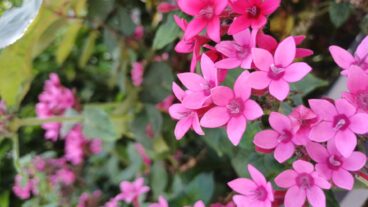The Madonna Lily grows in other places around the world, but Christian believers are certain its origin is in the Holy Land.A flower developed in Israel has aroused excitement and interest at the Vatican, which will soon be receiving a very special bouquet, specially delivered from Beersheva.
The “Madonna Lily” is a rare white Easter lily that Israeli agriculture and biologists have successfully managed, for the first time, to prepare for flowering in time for Easter. The team of horticulturists at Ben-Gurion University of the Negev were able to coax the bulb to flower two months earlier than its natural schedule, using modern agrotechnical methods.
According to Christian tradition, the Madonna Lily was presented to Mary by the Angel Gabriel at the ‘Annunciation’ – when he informed her she was pregnant with Jesus. The flower – called Lilium candidum in Latin – is depicted in paintings relating to the encounter between Mary and the Angel Gabriel since the Middle Ages.
In paintings of the great Italian Renaissance artists depicting the Annunication, the white flower appearing exactly as it does in nature is clearly visible, and is regarded as a symbol of Mary’s purity and celestial nature.
The horticultural team headed by Dr. Michele Zaccai has been growing the flower bulbs under special greenhouse conditions in order to speed up its flowering before the period of special interest to the Christian world. Normally, the flower only blossoms from May to June – too late for the Annunciation and for Easter celebrations.
They plan to send the first bouquet of the early flowering lilies to the Vatican on the day that Catholics mark the Annunciation. According to the New Testament, the event occurred near Nazareth, and a church exists in Nazareth to commemorate the event – which is marked by many Catholics around the world on March 25, nine months before Christmas.
The unique white lily which grows naturally in Israel, is an endangered species. It grew at two sites in the Galilee and the Carmel, which constituted its most southern natural territory. It has a tall stem and small white flowers, and a pleasant and delicate aroma. It was for years a symbol of Israel and was used as an image of ancient coins in Eretz Yisrael around 350 BCE.
Zaccai notes that the flower grows in other places around the world, but Christian believers are certain its origin is in the Holy Land, where the religious event traditionally took place.
The BGU researcher said the timing and Israeli location of the cultivation and early flowering of the Madonna Lily comprise a significant commercial potential for sales to Christians. She said that the new early availability of the lily has already been written about in the Italian press.
“This beautiful flower is grown in other parts of the world – despite the fact that for Christian believers it is meaningful if the origin of the flower is the Holy Land, where the historical events connected with Mary occurred. The combination of the fact that we can provide this flower in time for Easter and the significance where they are being grown, bears a great market potential, with implications for the entire Christian world,” said Zaccai.
She noted that this flower is distinct from the flower known as the ‘Easter Lily’ (Lilium longiflorum), whose origin is in Japan and is more common in the flower market today.
“The distribution of the Madonna Lily is much smaller and is focused on a private market. The reason for its limited availability has been the difficulty of controlling the timing of its blossoming,” said Zaccai. “Because of this problem, it is not commercially available as a cut flower: only as a bulb.”
Zaccai, who as an expert in flower development is intimately acquainted with the flower-growing industry in Israel, says that Israeli growers are among the most skilled and technically proficient in the world, and have had a traditionally strong presence in the European flower market. But in recent years, they have had trouble competing with growers in parts of Africa, where extremely low labor costs have allowed them to offer flowers at lower prices.
“Israelis need to focus increasingly on niche markets, and I think that the Madonna Lily is a perfect example,” she said.











